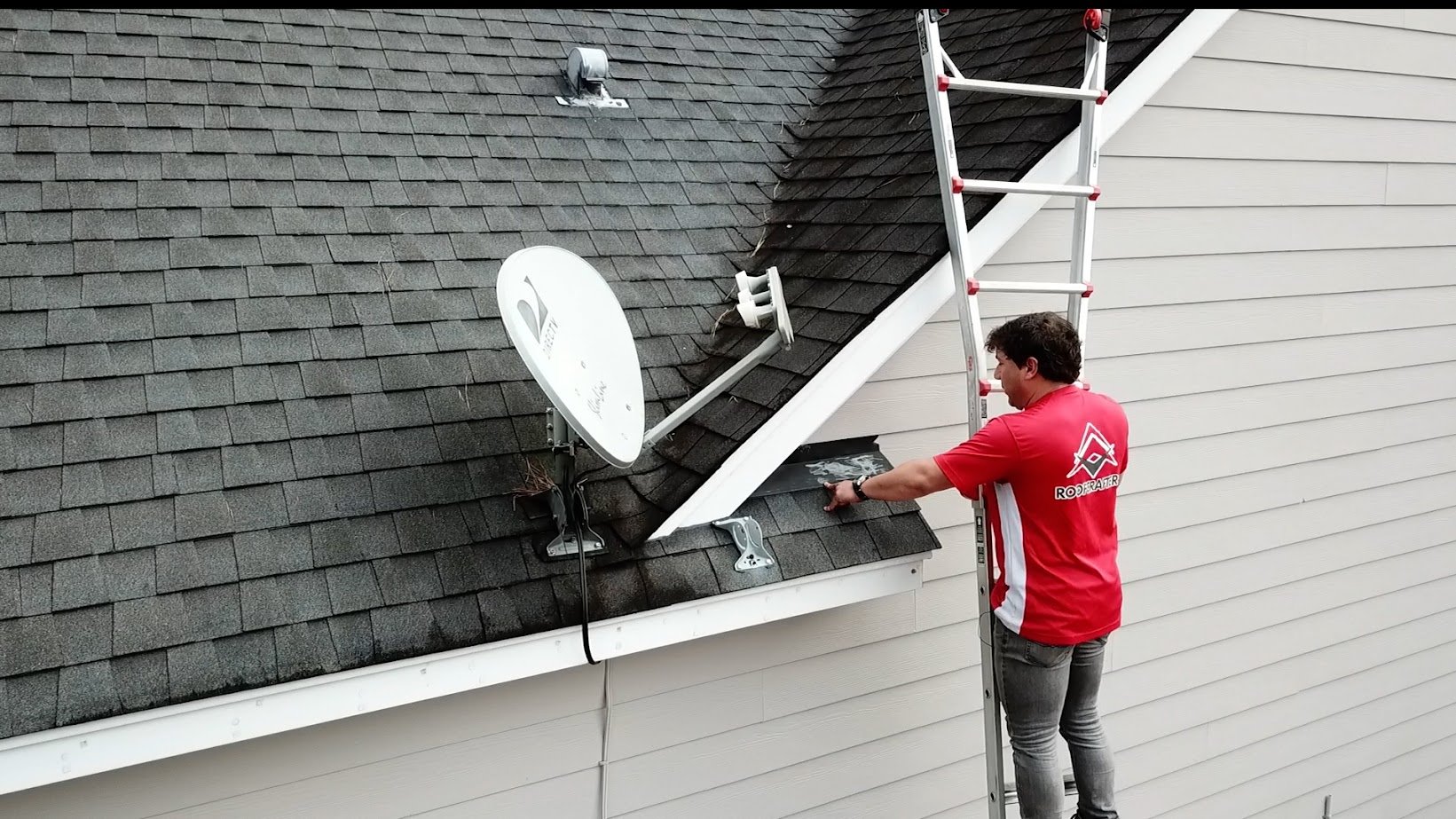The Crucial Guide to Roof Evaluation: Securing Your Home Versus Usual Damages
Regular roof evaluations are an important part of home upkeep that can prevent minor issues from escalating into significant problems. Roof Inspection Austin TX. Property owners commonly forget the indicators of wear, such as missing out on tiles or refined leakages, which can endanger the stability of the entire structure. Understanding the significance of these analyses not just help in protecting your roofing system's lifespan but additionally boosts energy efficiency and total safety and security. As we check out the common signs of roof covering damage and effective upkeep methods, it ends up being apparent that a proactive strategy is crucial for securing your investment. What details elements should you focus on throughout your next inspection?
Significance of Normal Roof Assessments
Regular roofing system examinations are important for keeping the integrity of a building's framework. These inspections act as an aggressive measure to identify prospective concerns before they escalate into pricey repairs or significant damage. By performing regular evaluations, building owners can guarantee that their roofings continue to be in optimum condition, thus extending their life expectancy.
Throughout these examinations, various factors are evaluated, including the condition of roof shingles, blinking, and water drainage systems. In addition, the visibility of algae, moss, or debris can be discovered, permitting prompt removal. Addressing minor concerns early can protect against more comprehensive problems, such as leaks or structural wear and tear, which may compromise the safety of the building.
Moreover, normal roof covering examinations add to power effectiveness. A well-kept roofing system reduces heat loss throughout cooler months and minimizes the stress on heating and cooling systems. This, subsequently, can bring about reduced utility bills and a lowered carbon impact.
Typical Indications of Roof Damages
Determining common indications of roof damage is crucial for house owners to keep the security and long life of their home. These problems can compromise the roofing's honesty, leading to leakages and more wear and tear.
An additional crucial indication is water discolorations on ceilings or walls inside the home, which typically show leakages originating from the roofing system. Home owners should also check for mold and mildew or mold growth, as these can thrive in moist problems created by roof leaks.
Flashing around vents and chimneys must be examined for corrosion or damages, as faulty flashing can enable water to permeate the roofing framework. Ultimately, drooping locations on the roof covering surface area might suggest structural issues, requiring instant interest. By identifying these indicators early, homeowners can take proactive steps to attend to roofing damages, inevitably securing their home from costly repairs and ensuring a resilient roof system.
Seasonal Roofing Upkeep Tips
Identifying the indications of roofing damage is just the very first step in ensuring the longevity of your roofing system; ongoing upkeep is just as important. Seasonal roof maintenance is important to not only extend the life of your roof but additionally to stop pricey repair services down the line.
During spring, check your roofing system for any type of indicators of winter months damages, such as split roof shingles or displaced flashing. Clean seamless gutters and downspouts to make sure appropriate drainage. In summer season, check for moss or algae growth, and consider using a safety sealer to avoid moisture build-up.
As autumn approaches, eliminate fallen leaves and debris from your roofing and rain gutters. This will assist decrease the danger of water pooling and potential leakages. It's also a great time to examine the roofing for any kind of indications of wear, such as loosened tiles or rusted flashing.
Do It Yourself Roof Covering Evaluation Checklist
A complete do it yourself roof covering inspection checklist is important for property owners seeking to preserve the stability of their roof covering system. Begin by checking out the roof covering surface area for any kind of noticeable indicators of damages, such as missing out on, fractured, or curling shingles - Roof Inspection Austin TX. Pay very close attention to areas around skylights, vents, and chimneys, as these prevail leak factors

Transferring to the inside, evaluate the attic for indications of water intrusion, such as spots or mold and mildew growth. Make certain proper air flow to avoid wetness build-up, which can result in damage.
When to Employ a Specialist,##.
While numerous homeowners can carry out standard roofing system inspections, specific conditions warrant the expertise of an expert. If you detect considerable damages, see this such as large missing roof shingles, noticeable sagging, or water stains on the ceiling, it is important to get in touch with a qualified roofing specialist. These concerns may indicate underlying architectural problems that need instant focus.
Additionally, if your roofing system is nearing completion of its expected life-span-- typically 20 to 25 years for asphalt shingles-- it is wise to have an expert examination. Experienced examiners can examine the roof covering's condition and provide informed recommendations on repair work or replacement.
Severe weather condition events, such as hailstorms or heavy winds, also demand specialist scrutiny. If left uncontrolled, also minor damage can lead to significant difficulties. If you're thinking about selling a property or purchasing, an expert assessment can uncover prospective problems that may influence the deal.
Verdict
Normal roof assessments are essential for keeping the stability of household structures. Prioritizing roofing examinations inevitably adds to a protected and risk-free living atmosphere.

Throughout springtime, check your roofing system for any kind of indicators of wintertime damages, such as split shingles or displaced find this blinking. Begin by examining the roofing system surface area for any kind of visible indications of damage, such as missing, split, or crinkling tiles.
 Taran Noah Smith Then & Now!
Taran Noah Smith Then & Now! Ross Bagley Then & Now!
Ross Bagley Then & Now! Ashley Johnson Then & Now!
Ashley Johnson Then & Now! Phoebe Cates Then & Now!
Phoebe Cates Then & Now! Soleil Moon Frye Then & Now!
Soleil Moon Frye Then & Now!